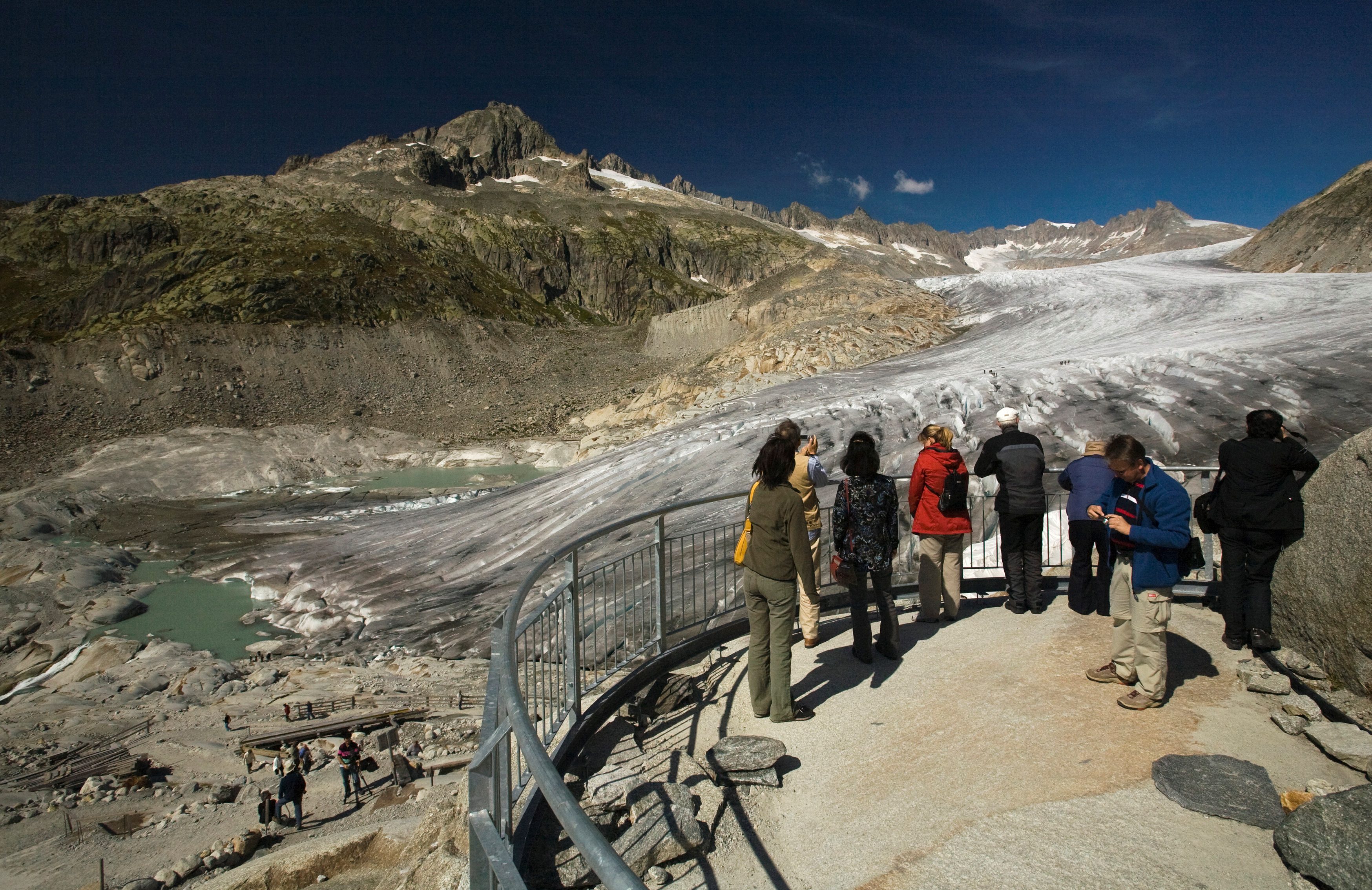- Social media feeds are currently filled with “10-year challenge” posts that juxtapose users’ photos from 2009 and 2019.
- Environmental activists are using the trend to draw attention to how much Earth has changed in the last 10 years, posting side-by-side images of our planet’s recent transformation.
- This year has started off with a slew of depressing news about climate change: Last year was the hottest year on record for the world’s oceans (which are also warming up faster than we thought), and Antarctic ice is melting faster than it used to.
The new year has delivered a one-two punch of bad news about the world’s oceans.
Not only did 2018 turn out to be the oceans’ warmest year on record, but scientists realized that oceans are also heating up 40% faster than they’d previously thought. What’s more, research has revealed that the Antarctic Ice Sheet is melting nearly six times faster than it was in 1980s.
So when a viral photo challenge emerged in which users juxtapose pictures of themselves from 2009 and today, some environmentalists seized on the opportunity to highlight Earth’s own “10-year challenge.”
Sites like Reddit and Instagram are exploding with posts that call for greater public awareness about the impacts of climate change. While the original challenge is meant to provide a visual representation of the way someone has matured or changed, the climate-change versions convey a more serious message: this is the 10-year challenge we need to start focusing on.
The real #10yearchallenge? Climate change. According to @IPCC_CH #SR15, we have just over 10 years to #ActOnClimate before we cause irreparable damage to our planet. Take our free course on #ClimateAction and become a part of the solution. Enroll now! https://t.co/puzQgIiUoQ pic.twitter.com/Ujz7kEAnoH
— The SDG Academy (@SDG_Academy) January 14, 2019
Many of the 10-year comparison photos show melting glaciers - one of the most visually dramatic effects of a warming planet.
Melting glaciers mean the North and South Poles are slowly getting make-overs (and not the good kind). In a worst-case scenario, called a "pulse," warmer water could cause the glaciers holding back Antarctica and Greenland's ice sheets to collapse. That would send massive quantities of ice into the oceans, potentially leading to rapid sea-level rise around the world.
If a pulse were to happen, the sea level in South Florida could increase by 10 to 30 feet by 2100. But because water - like most things - expands when it warms, sea-level rise is inevitable even if the ice sheets don't melt, since the oceans absorb 93% of the extra heat that greenhouse gases trap in the atmosphere.
It's one thing to talk about these threats in the abstract. But it's a different ballgame when we see visual proof.
The top photo here shows the Rhone glacier in Switzerland now, while the bottom shows how much more ice there was in 2009.
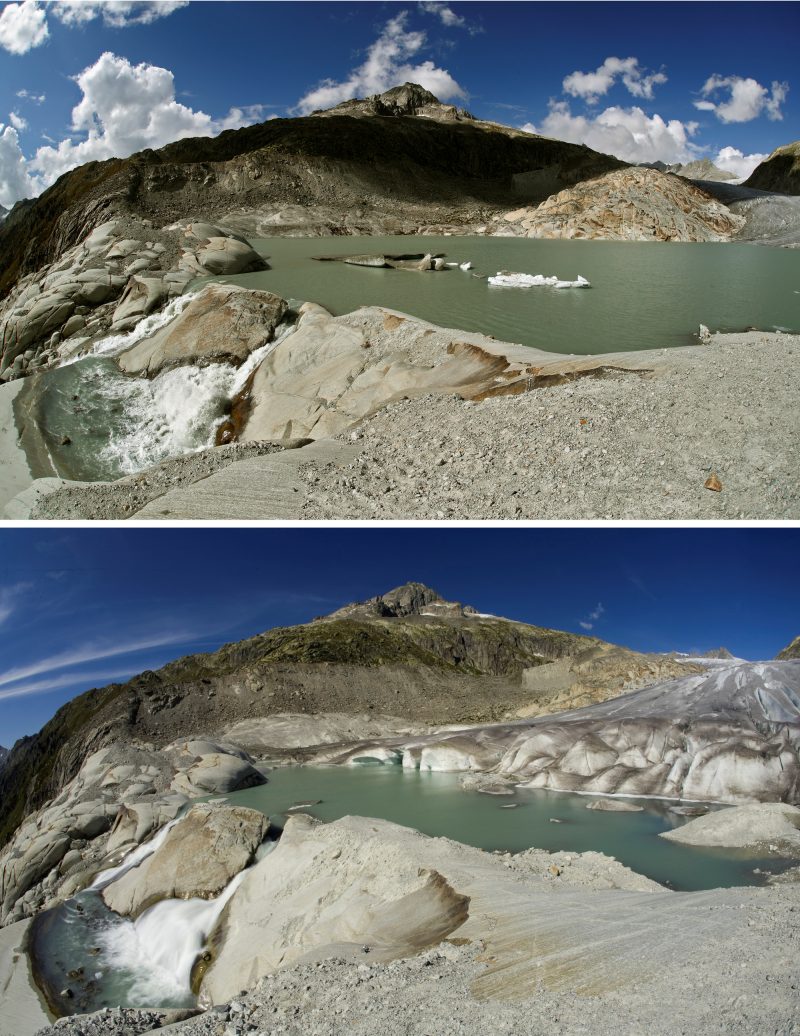
Glaciologists think half of Switzerland's small glaciers - and the streams they feed - will be gone within the next 25 years, according to Reuters.
Although many glaciers have shrunk dramatically in the last decade, juxtapositions that show their changes over a longer period of time are even more striking.
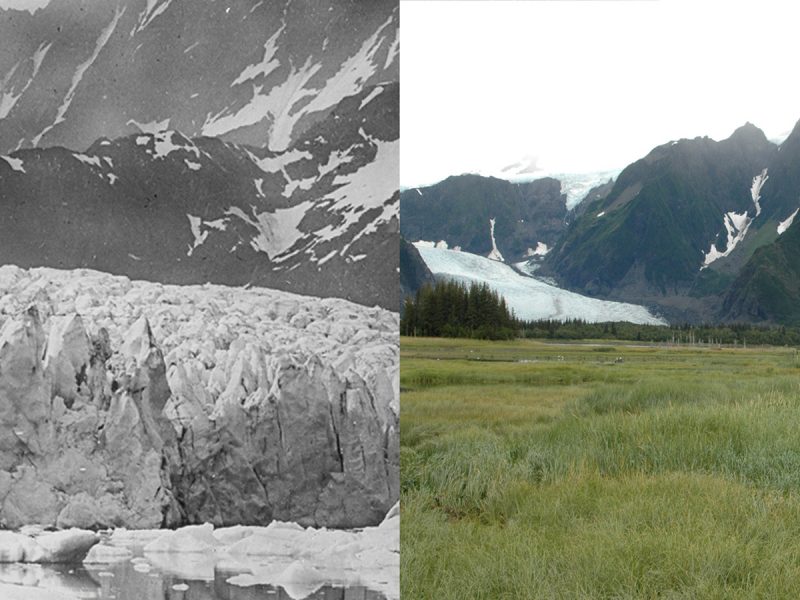
This pair of images shows the retreat of Alaska's Pedersen Glacier between 1917 and 2005.
These photos of Alaska's Muir Glacier are placed on top of each other so you can swipe back and forth to see how much has melted over the last 120-plus years.
Different glacial systems — if and when they melt — may impact some coastal cities more severely than others, according to NASA research.
http://instagr.am/p/BsukjAHFpsi
Scientists even made an interactive tool that lets you pick from more than 290 cities to explore how they might be impacted by certain glaciers melting.
Of course, the effects of climate change aren't limited to glaciers.
http://instagr.am/p/BstPq2Lly4M
Coral reefs (and the ecosystems that they support) are dying.
Higher ocean temperatures and acidification cause corals to expel the algae living in their tissues and turn white — what's known as coral bleaching. Swipe back and forth here to see it for yourself.
Rivers and lakes are also shrinking as growing populations demand more water. Pesticide and fertilizer run-off from farmland can also pollute what little is left.
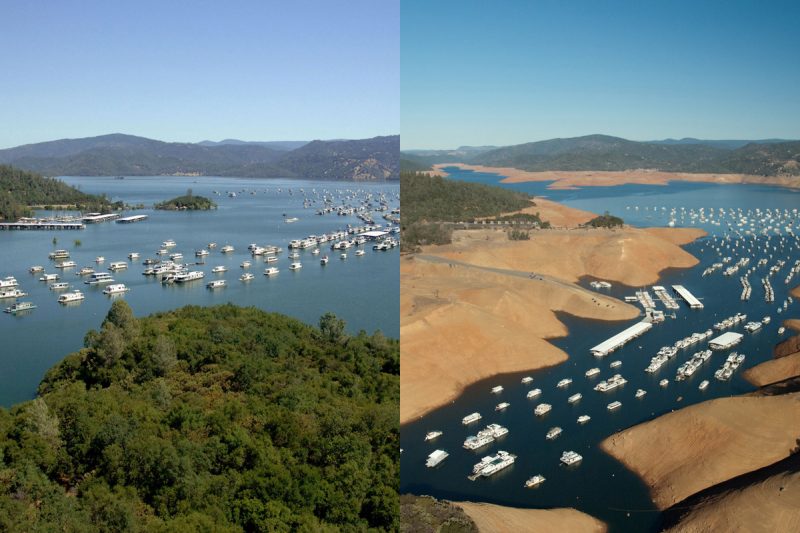
Forests in South America and Central Africa are also shrinking because of logging and deforestation.
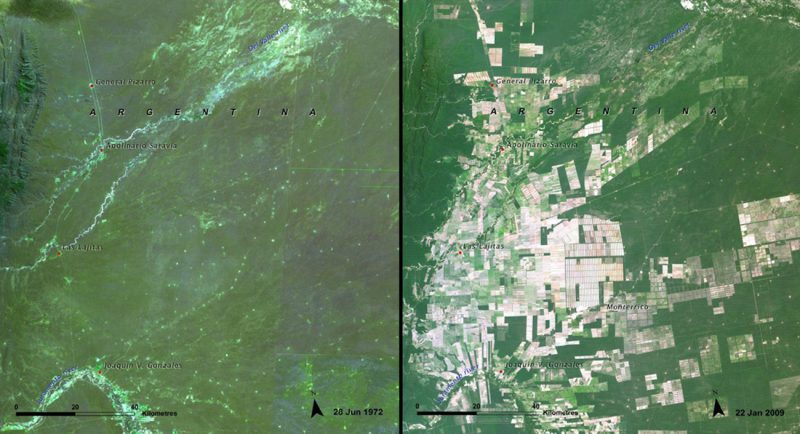
Politicians and celebrities are chiming in about our environmental 10-year challenge, too. Mesut Özil, who plays for Arsenal in the UK's Premier League and played for the 2018 German World Cup team, embraced the message.
The only #10YearChallenge we should care about 🙏🏼🌍 #M1Ö pic.twitter.com/S8hU7gNgZJ
— Mesut Özil (@M10) January 17, 2019
In an Instagram post, New Jersey Senator Cory Booker wrote, "if we want to pass on a sustainable healthy world to the next generation, we need to have started yesterday."
http://instagr.am/p/BstWNL7Bs5U
Like Booker, many people are pointing out that humanity may only have one more 10-year challenge's worth of time to act on climate change before it'll be too late to meet the world's goals.

